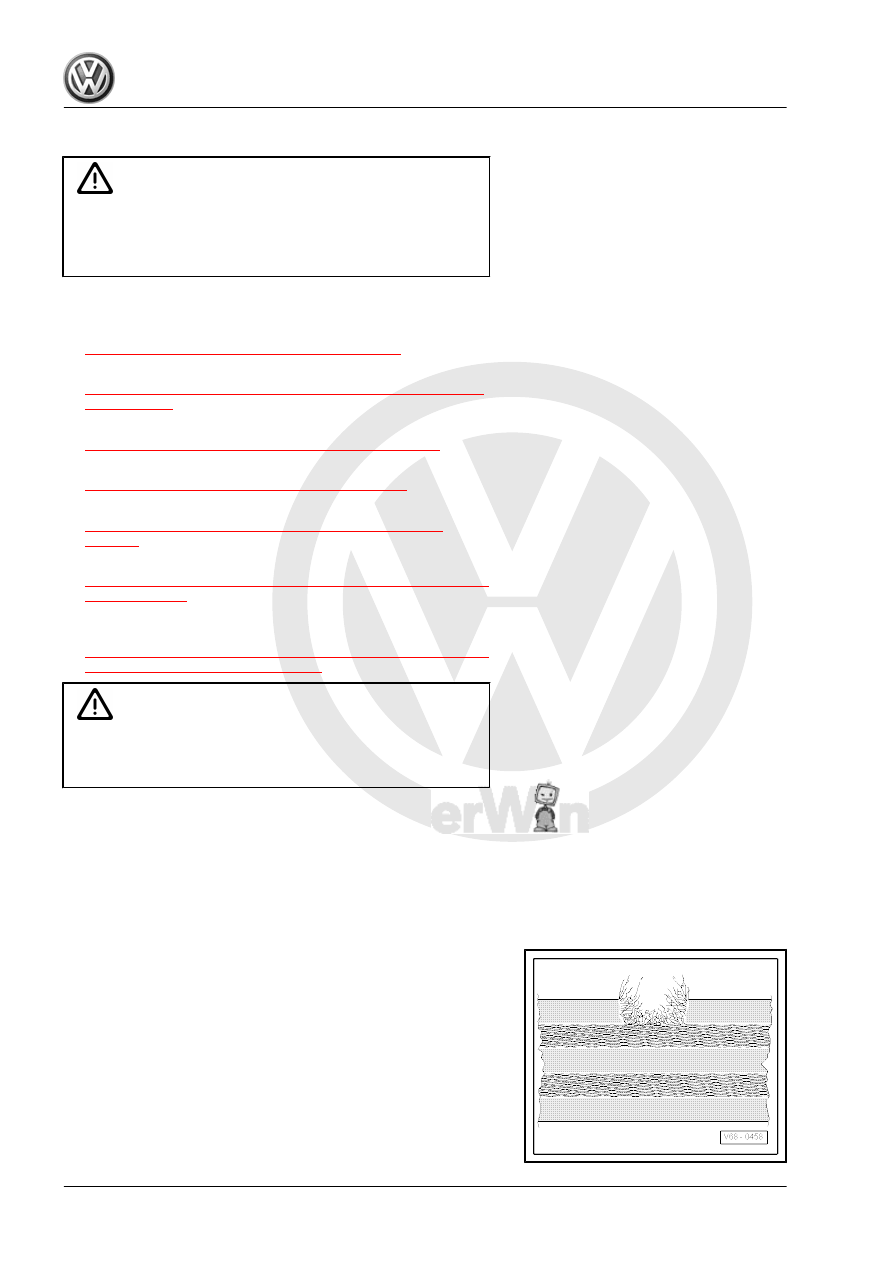Volkswagen Golf / Golf GTI / Golf Variant. Manual - part 341

1.11
Seat Belts, Checking
WARNING
After every accident the seat belt system must be inspected
systematically! If damage is determined at any inspection
point, the customer must be informed that it is necessary to
replace the seat belt.
Inspection Points
♦ Check the seat belt webbing. Refer to
⇒ “1.12 Seat Belt Webbing, Checking”, page 12
♦ Check the automatic belt retractor (locking function). Refer to
⇒ “1.13 Automatic Belt Retractor (Locking Function), Check‐
♦ Visual inspection of the seat belt latch. Refer to
⇒ “1.14 Seat Belt Latch, Visually Inspecting”, page 14
.
♦ Seat belt latch function test. Refer to
⇒ “1.15 Seat Belt Latch, Function Test”, page 14
♦ Check the seat belt relays and belt tongue. Refer to
⇒ “1.16 Seat Belt Relays and Belt Tongue, Checking”,
.
♦ Check the fasteners and mounting points. Refer to
⇒ “1.17 Fasteners and Mounting Points, Checking After a Col‐
♦ Check the function of the child seat anchorage for additional
child seats (not for the driver safety belt). Refer to
⇒ “1.18 Seat Belt for Child Seat, Checking Child Seat Restraint
Function, Market-Specific”, page 15
Caution
If customer refuses to have a damaged seat belt replaced, an
appropriate note should be made in the maintenance schedule
booklet.
1.12
Seat Belt Webbing, Checking
Procedure
– Pull the belt completely out of the automatic belt retractor or
lap belt adjustment tongue.
– Check the seat belt webbing for contamination, wash with mild
soapy water if necessary. Refer to the Owner's Manual.